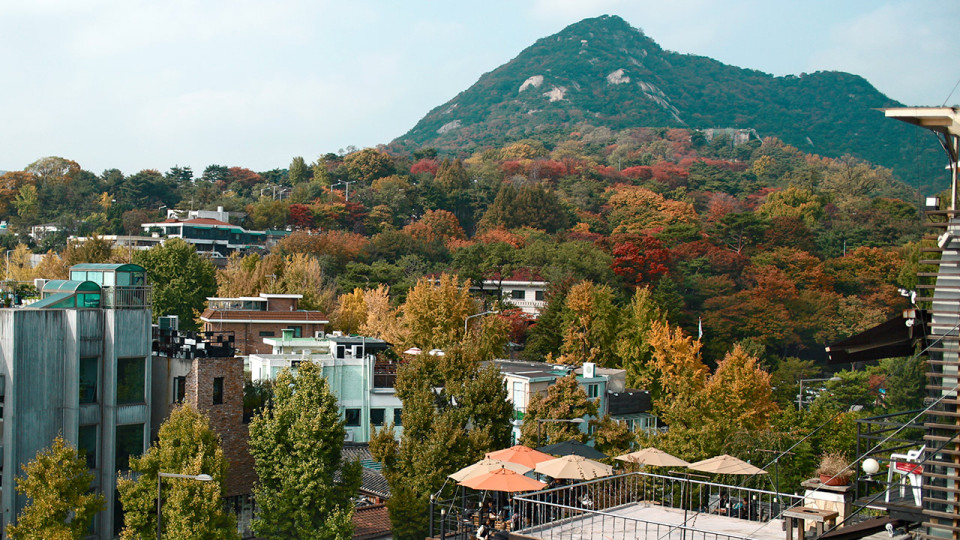As we say goodbye to 2014, it’s humbling to realise that we had so much to be thankful for in the last 12 months. After all, it’s been a spectacular year that took us to new countries where we immersed ourselves in different cultures and tasted exciting cuisines. In October, we accompanied a group of athletes from Singapore who were running in the Chuncheon Marathon. Beyond the thrill of the marathon, our journey consisted of a marvellous tour around Seoul and Chuncheon in the Gangwon Province.

On our vacation, we ate juicy pears that we picked from the orchard trees with our very own hands. In Myeongdong and other markets, we had a blast shopping the various vendors for souvenirs and street food. We also learned the technique for making Kimchi. Of course, we ate that, too. We even had the chance to try on the traditional Korean Hanbok and take photos of each other in our stunning outfits. Our visit to Nami Island was fabulous, where the vibrant Fall foliage made it one of the best places to appreciate the seasonal change of leaves.
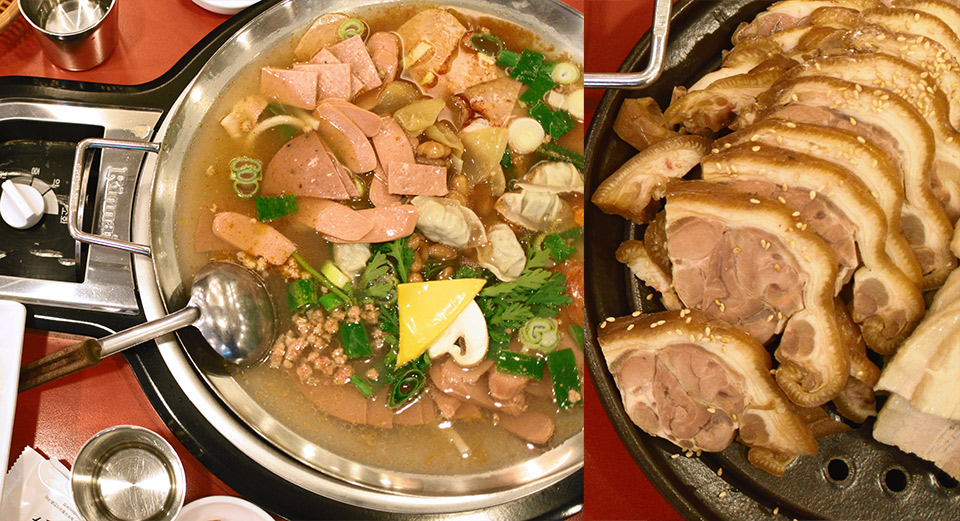
Throughout our adventure, we keep discovering the most supreme dishes that Korea had to offer, and all of it was delicious. Needless to say, it was a fun-filled week full of adventure.

To each and every one of you who joined us on this 8 day and 6 night running vacation, we wish to express what a pleasure it was travelling with you! We would also like to give thanks to Dynasty Travel and the Korea Tourism Organisation for coordinating the events on our getaway. These are some of our highlights from our week-long journey around Chuncheon and Seoul:
Activities in Chuncheon, Gangwon Province
1. Visiting Nami Island
We stopped by Nami Island on our way to Chuncheon from Seoul. The 10min ferry ride over smooth waters offered romantic views of the island as we approached it by boat. If you’re a fan of the TV drama Winter Sonata, then you’ll probably recognize Nami Island as the backdrop of the show.
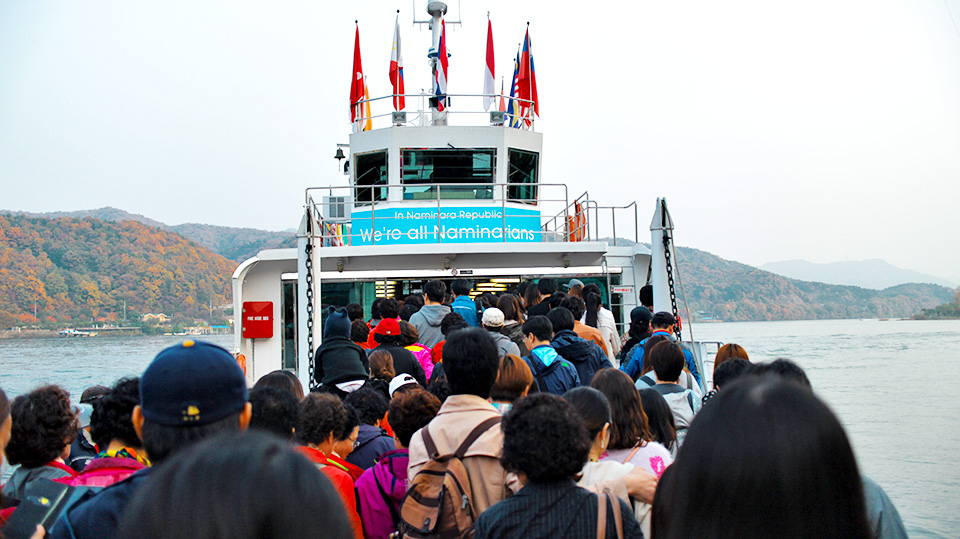
Today, there are tributes around the island to the series, and you can look out for the shooting locations as you walk beneath the well-manicured trees.
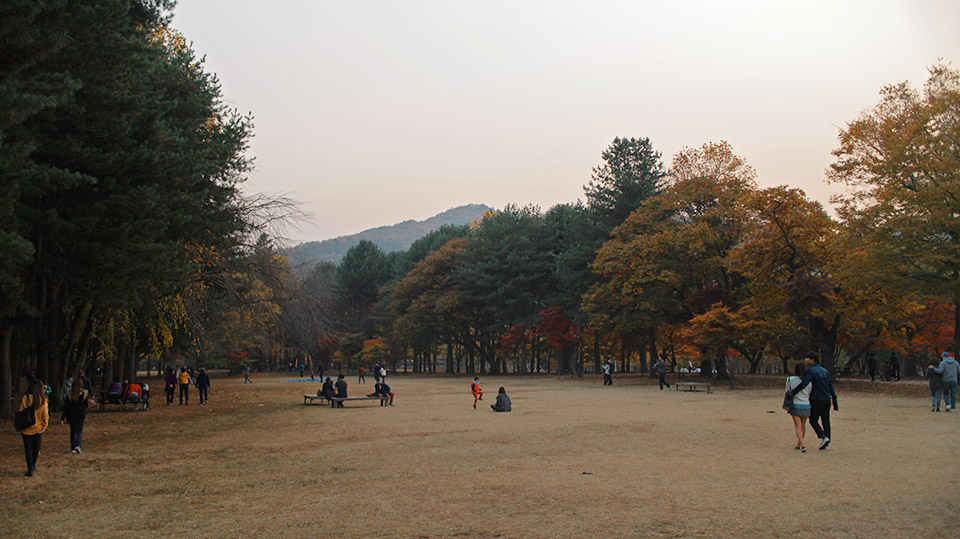
Nami Island is best in the Autumn for the broad-leaf trees’ shocking tangerine, crimson, and golden hues. There are paths where the soft brown leaves make a pleasant rustling sound and cushion your steps as you walk, or whizz by on rented bicycles. Nothing compares to the clean scent of the tall redwoods and bushy nut pine trees that line the trails.
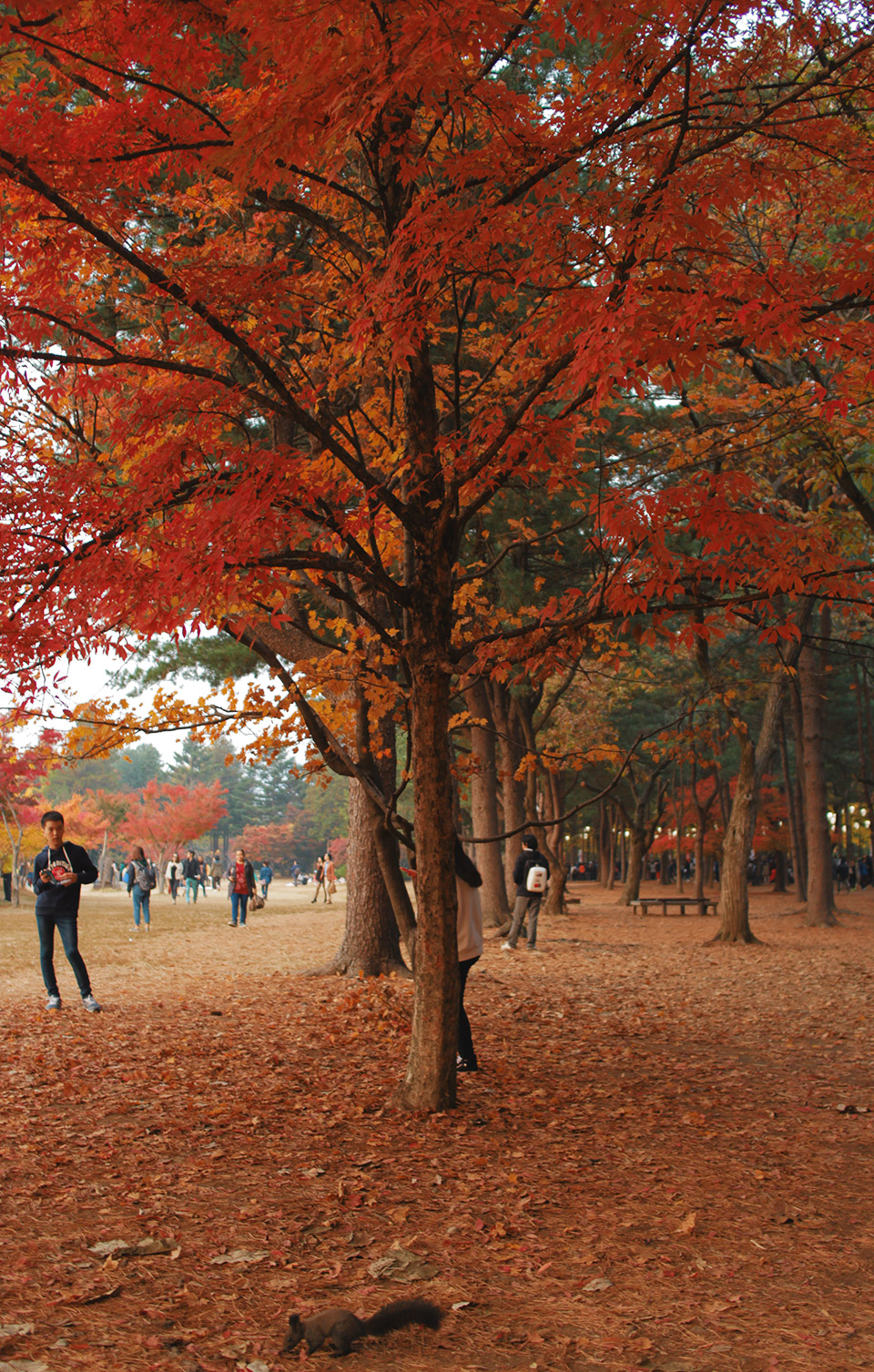
2. Eating Dakgalbi at Chuncheon
After the marathon, we tasted Dakgalbi, which is a well-known Chuncheon specialty. It’s a seasoned and pan-fried boneless chicken dish that is served with vegetables and rice cakes. The recipe originated in the back alleys of Chuncheon’s Jungang Street in the 1960s and 1970s. Originally, you would find it eaten in the winter time with the diners seated around a circular table that burned coal briquettes.
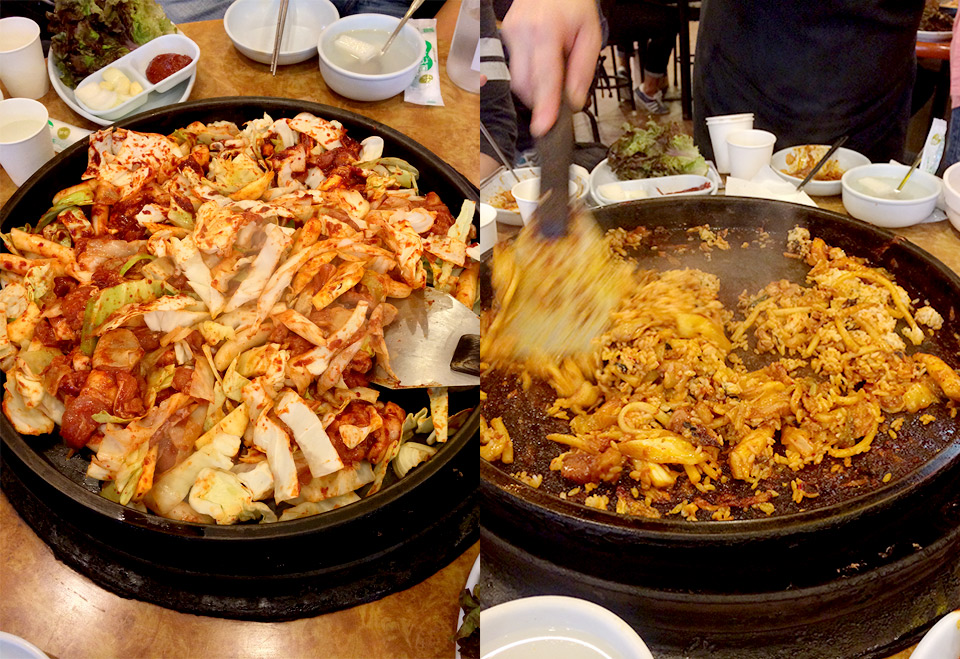
Today, the dish is just as fiery as it is insanely delicious. The savory, smoky flavour from the steel pan is best enjoyed by adding your rice to the Dakgalbi gravy just before you finish your meal. The rich sauce soaks into the rice, so it’s ideal for making bokkeum bap or fried rice. We highly recommend the Dakgalbi in Chuncheon; it’s is easily one of our favourite dishes in South Korea.
3. Learning how to make Kimchi
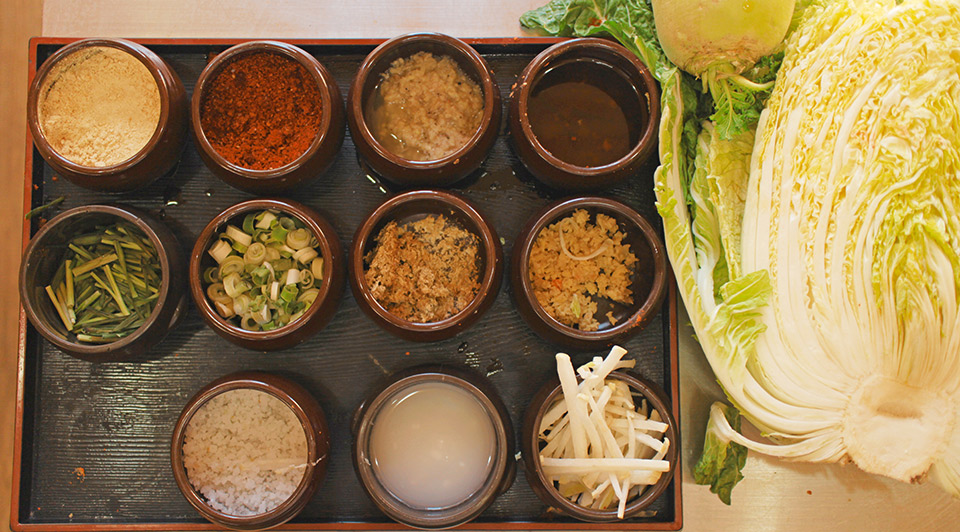
If you haven’t tried Kimchi before, you’re in for a sweet and sour treat. It’s a fermented cabbage dish, and everyone who prepares it has their own special blend of vegetables and seasoning to add before they set it aside to develop that distinctive flavour.
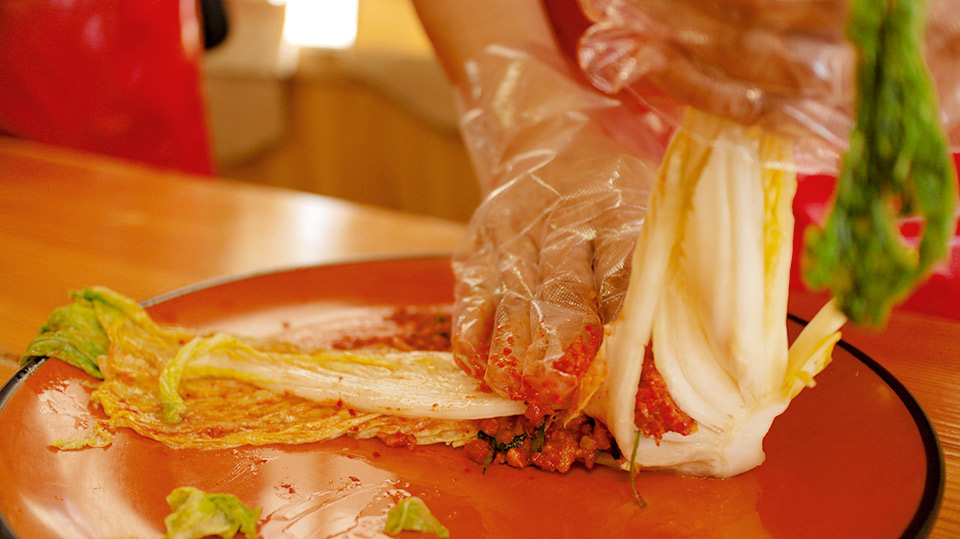
The recipe is fairly simple, yet it was tantalizingly appetizing to watch it being made before we were allowed to taste it.
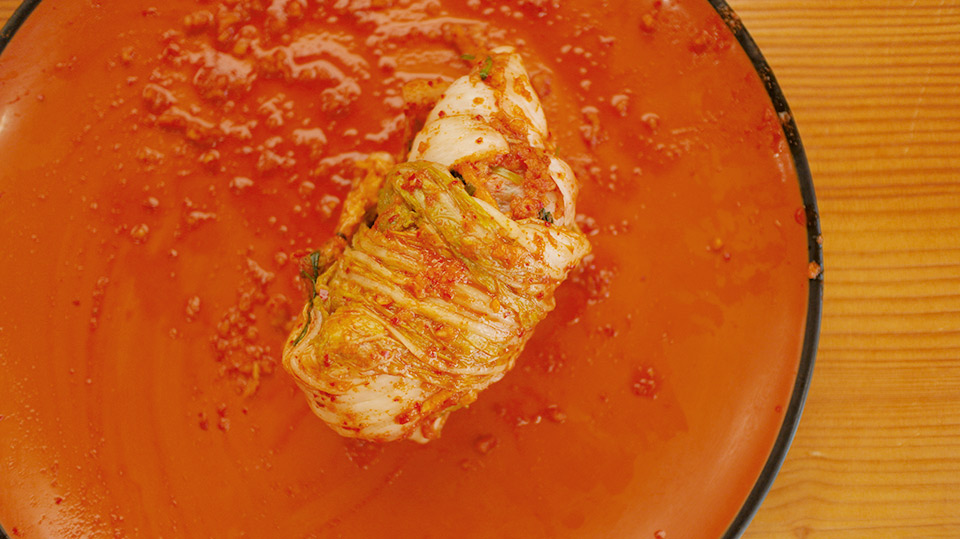
Once we learned what went into the Kimchi, we could appreciate all of the ingredients and how they transformed into new notes on our taste buds. It made the entire workshop worthwhile.
4. Wearing the Hanbok
The traditional dress worn in Korea is the Hanbok, and it is usually worn for festivals and special occasions.
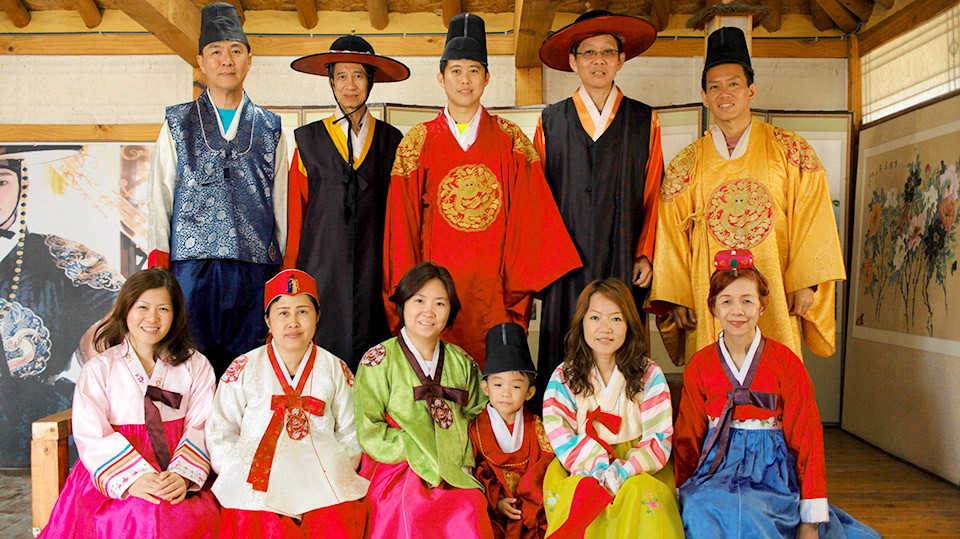
Its clean lines and attractive colours are very beautiful, and the fabric is long and flowing. We took pictures of one another looking elegant in our new clothing as we learned more about the role this garment plays in today’s Korean culture.
5. Picking fresh fruit
Autumn is also pear season, so we made a special trip to a local farm to hand select the tree-ripened fruit for ourselves. Since the pears are ripened while still on the tree, they get an extra boost of flavour.
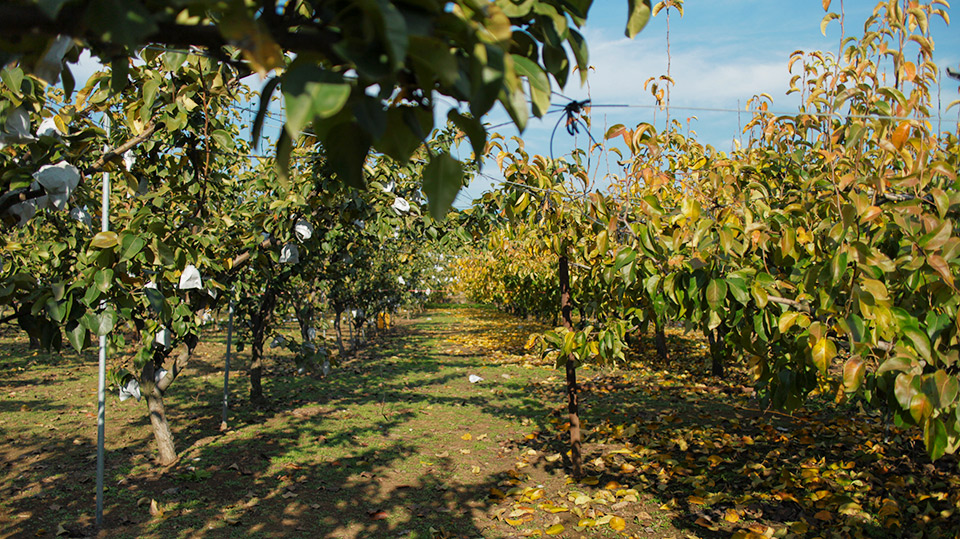
We plucked the mouth-watering treasures straight from the branches. The sweet juices gushed from the flesh of the fruit as soon as our teeth sunk into the skins, and it was a joy to eat them as we walked through the fresh farm air.
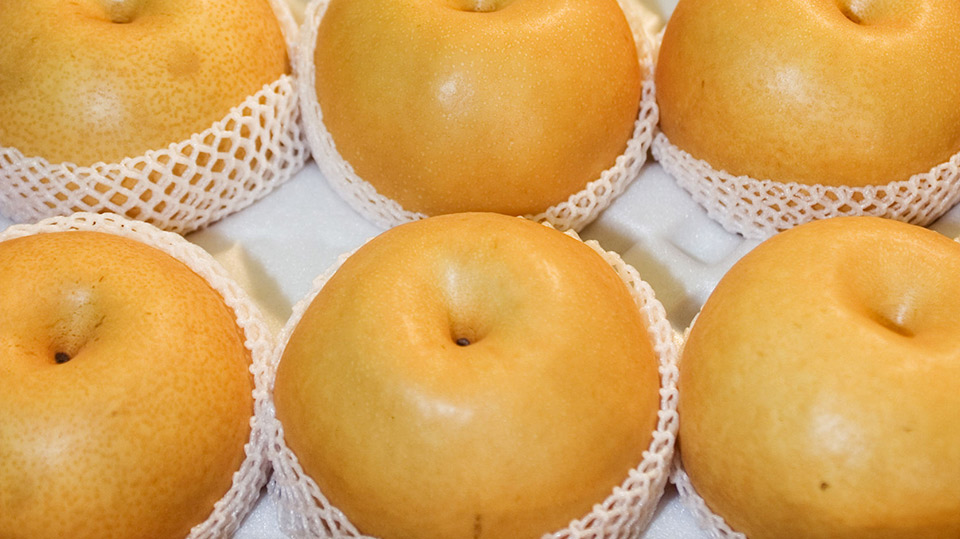
Activities in Seoul
6. Visiting the city
Seoul is a dynamic city where you can find the antiquity of palaces and ancient tombs alongside of marks of modernity like skyscrapers and contemporary museums. It’s also a major cultural destination where you can partake in lively Autumn festivals, sit in on enchanting opera and dance performances, or meet fascinating people amidst the thriving night-life.

Even though it’s the world’s second largest urban metropolis, the city itself still has plenty of green spaces where you can view the Fall colours. Since the temperatures begin to drop and cool breezes sweep across the city, it’s a particularly pleasant time of year to visit.
7. Dining at Gwangjang Market
At the Gwangjang Market, we jumped from stall to stall and ate to our hearts’ content. For dinner, we had bindaetteok, the most sought after street food in the market. It’s pancake made from ground mung beans and various vegetables such as spring onions, peppers, or even Kimchi.
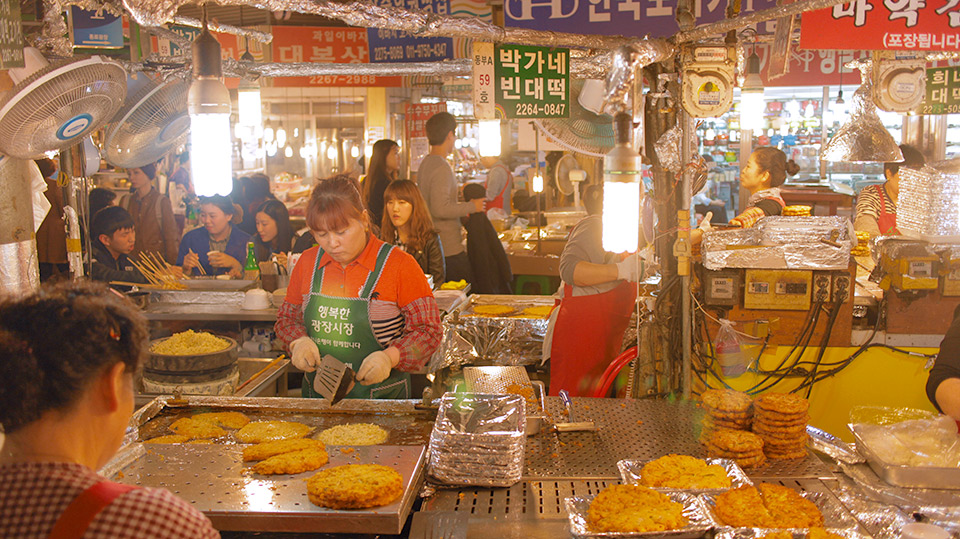
Not only are they reasonably priced, but they’re cooked to order so you will always have a hot, crispy treat. It’s especially delicious paired with makgeolli, a traditional Korean rice wine.

To round off our meal, we had a tasty assortment of soup dumplings stuffed with meat and Kimchi.
8. Visiting Hanok Village
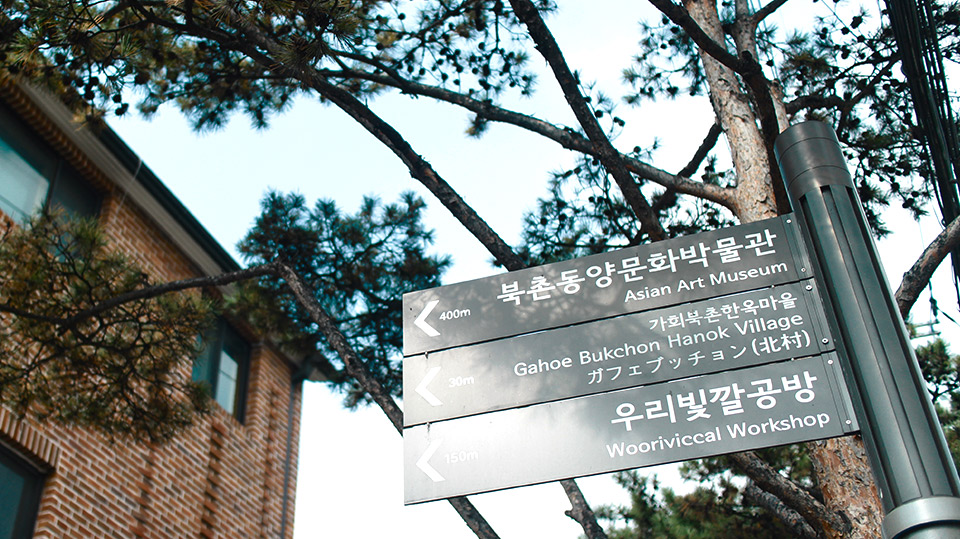
Hanok Village is an area of cultural preservation for the traditional Korean houses called Hanoks. Today, the houses stand as monuments to the grace and ingenuity found in both the attention to detail and functionality for these traditional homes.
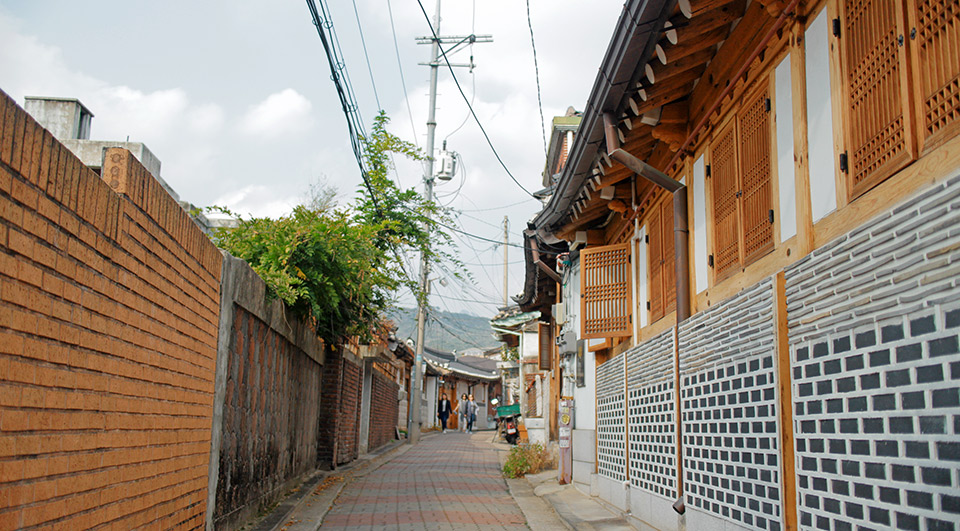
On our trip to the village, we were able to explore the houses from people of various walks of life, from the middle class to high government officials, aristocrats, and even the nobility.
9. Browsing the Namdaemun Market
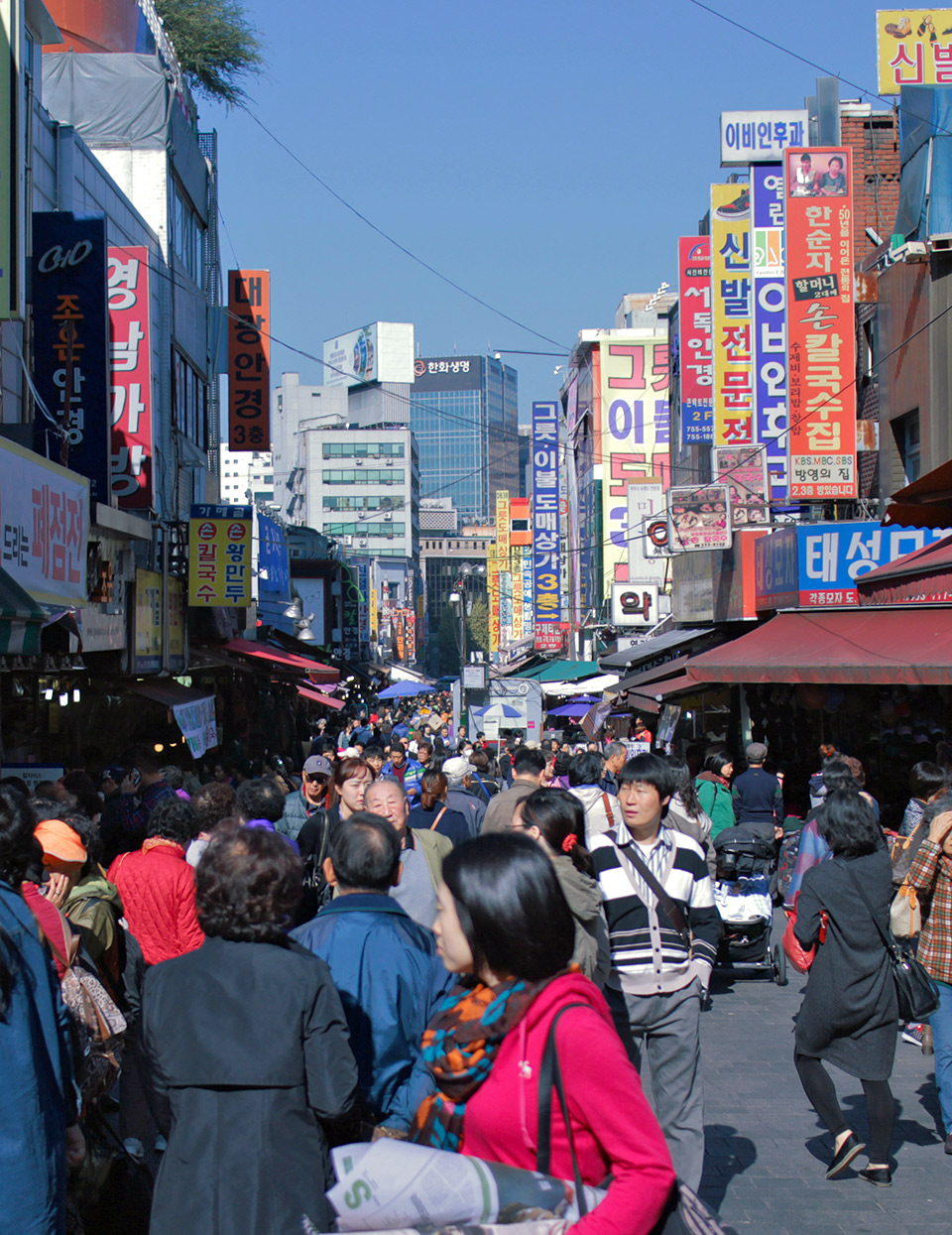
The bustling Namdaemun Market is located at the centre of Seoul. Opened in 1964, it is the oldest and largest market still functioning in Korea today. Since the streets where the market had settled were constructed before the popularity of cars, vehicular traffic is not allowed. This is good news for visitors because there is space for pedestrian foot traffic.
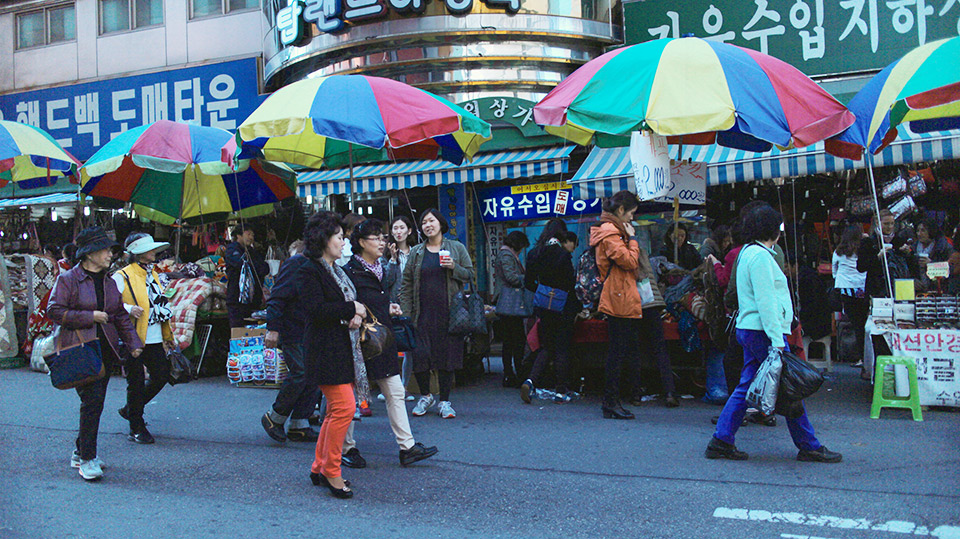
Whether it’s clothing, fine art, kitchenware, flowers, or fishing gear, you can find almost anything in this market. Many of the store owners operate their own factories, so the market has extremely affordable wholesale and retail prices.
10. Shopping in Myeongdong
Meanwhile at the heart of Seoul, Myeongdong offers a shopping experience for people who are willing to spend a little more. On the main street we had access to shopping malls such as Migliore and brand name standalone stores. Korean skin care and cosmetic brands are found at every corner of Myeongdong.
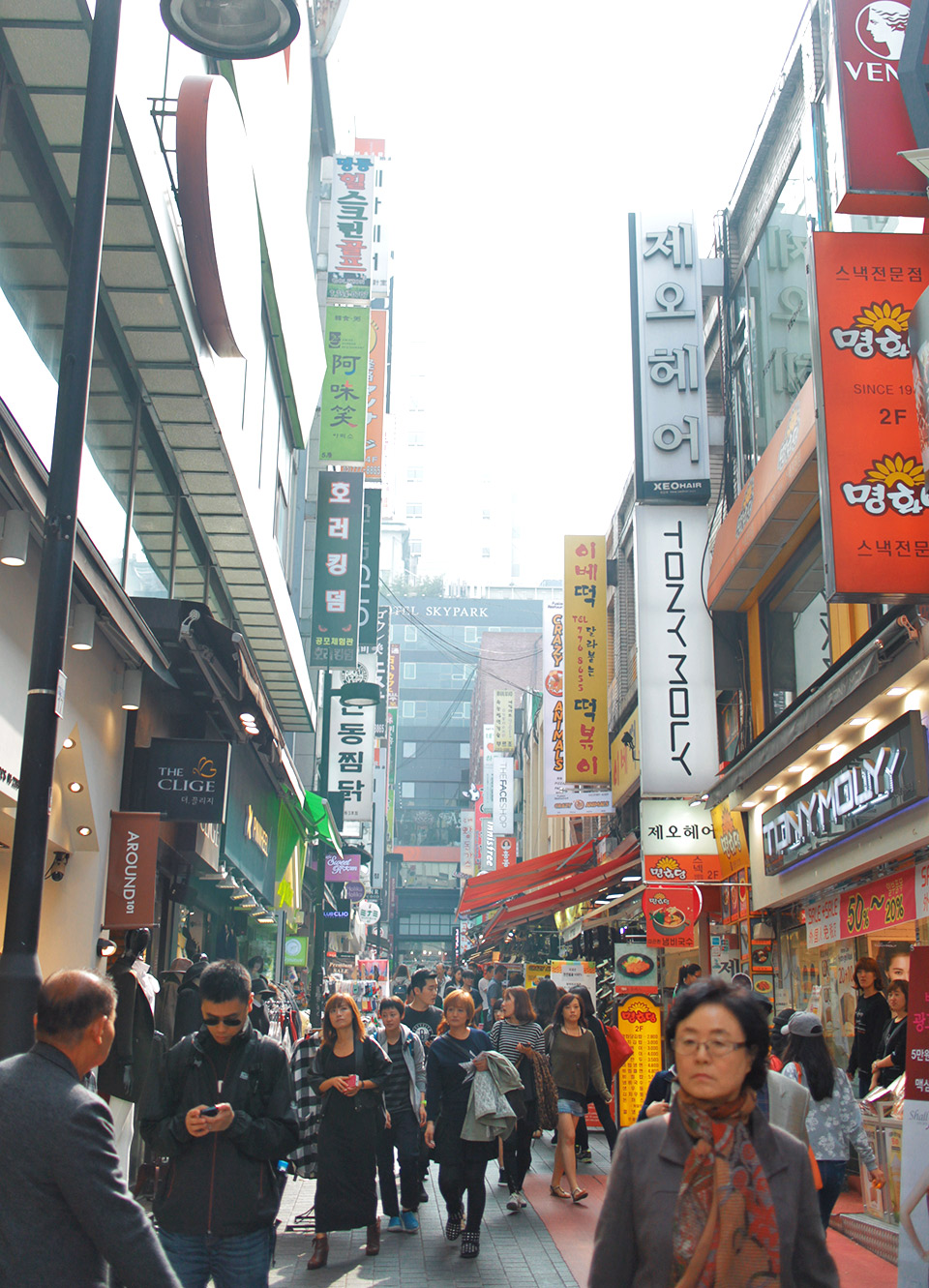
Making this Vacation Your Own
Running in a marathon is the perfect reason to travel to Korea to see all of these great sights, taste all of the great food, and more! If you want to plan your own trip, the good news is that the Korea Tourism Organisation (KTO) is already lining up exciting new itineraries around this year’s marathons.
Has your wanderlust been enticed? Stay tune for the next article on 2015 races and travel packages to Korea!



